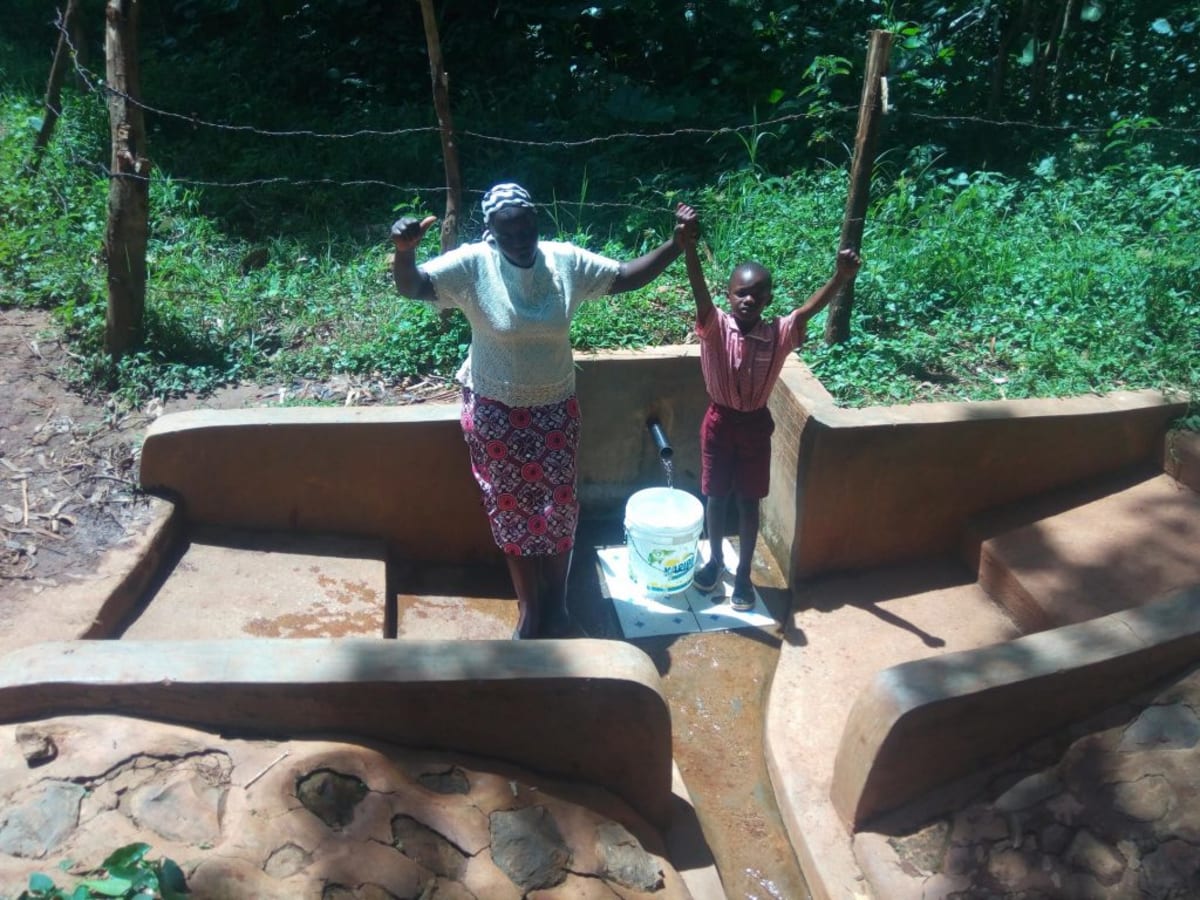This project is a part of our shared program with Western Water and Sanitation Forum (WEWASAFO). Our team is pleased to directly share the below report (edited for clarity, as needed).
Welcome to the Community
Irenji is unique compared to other areas, attracting local tourists and the occasional international tourist. This is because the adults in this area mold beautiful clay pots.
A normal day in Irenji commences when women and children go to fetch water from Shianda Spring so they can clean and prepare breakfast. Children are then shuttled off for school. Men head out right away to milk the cows, eating breakfast only when they get back. They then head off to either their farms or begin molding pots. The women join their men after household chores because they say "two are better than one."
Water Situation
Shianda Spring is the main water source for over 50 households in Irenji. While conducting the baseline survey it was evident that the people relying on Shianda Spring have really suffered from drinking its water. The spring is unprotected and open to contamination from many different sources. When it rains, waste is washed into the spring. The water is further dirtied with all of the coming and going of both people and animals.
This water is used for cooking, washing, watering animals, irrigating farms when it doesn't rain, and drinking. Cases of typhoid and other waterborne diseases are an everyday occurrence. Mrs. Elizabeth said, "Clean water is quite safe for consumption, in my community since time in memorial, we have been victims of water borne diseases due to consumption of unclean and unsafe water from shianda spring. Massive resources have been used to cater for the same. Direct translation from Swahili, "water doesn’t have bad heart" has made many to suffer since they don’t treat or boil the water before consumption."
Sanitation Situation
The homes that I was invited into revealed how bad the situation is here. The compounds are poorly kept; children are filthy and no one seems to care. Individuals visit the unkempt latrines barefooted and do not wash their hands after. Sanitation and hygiene in this community is quite poor and needs urgent attention.
Most people lack proper latrines, dish racks, and clotheslines. When asked about these things, community members were not able to explain their importance. Those who don't have latrines relieve themselves in the privacy of farm crops or bushes around their homes. Waste that is not properly disposed of is then spread around the community by flies, wild animals, and rainwater.
Plans: Hygiene and Sanitation Training
Community members will attend hygiene and sanitation training for at least two days. This training will ensure participants are no longer ignorant about healthy practices and their importance. The facilitator plans to use PHAST (Participatory Hygiene and Sanitation Transformation), CLTS (Community-Led Total Sanitation), ABCD (Asset-Based Community Development), group discussions, handouts, and demonstrations at the spring.
Training will also result in the formation of a committee that will oversee operations and maintenance at the spring. They will enforce proper behavior around the spring and delegate tasks that will help preserve the site, such as building a fence and digging proper drainage.
Plans: Sanitation Platforms
On the final day of training, participants will select five families that should benefit from new latrines.
Training will also inform the community and selected families on what they need to contribute to make this project a success. They must mobilize locally available materials, such as bricks, clean sand, hardcore, and ballast. The five families must prepare by sinking a pit for the sanitation platforms to be placed over. All community members must work together to make sure that accommodations and food are always provided for the work teams.
Plans: Spring Protection
Protecting the spring will ensure that the water is safe and adequate for drinking. Construction will keep surface runoff and other contaminants out of the water. Fetching water is predominantly a female role, done by both women and young girls. Protecting the spring and offering training and support will therefore help empower the female members of the community by giving them more time and efforts to engage and invest in income-generating activities.

 Protected Spring
Protected Spring
 Rehabilitation Project
Rehabilitation Project





























